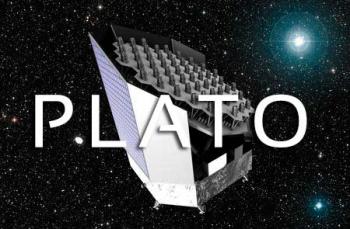The European PLATO mission definitively accepted at ESA.
The PLATO space mission (Planetary Transits and Oscillations of stars) was adopted at a meeting of the Scientific Programme Committee of the European Space Agency (ESA) on 21 June 2017. PLATO aims to discover rocky planets around nearby stars, similar to our Sun. Selected by the European Space Agency (ESA) in 2014, the mission was in preparation and its adoption completes the study phase and gives the green light to the implementation phase of the instruments. As a result, in the coming months, a call for proposals will be issued for the supply of the space platform on which the telescope and its instruments will be placed. PLATO will be launched in 2026, and will be placed nearly 1.5 million km from Earth. The satellite will monitor tens of thousands of bright stars, looking for periodic light variations of some ten thousandths, signs of a planet passing in front of their star's disc.
Contacts CEA : Rafael Garcia, Sacha Brun, Stéphane Mathis, Christophe Cara
See : - Agence Spatiale Européenne (ESA) press release (21 June 2017)
See also : News from LDE3 Laboratory
(Laboratoire Dynamique des Etoiles, des (Exo)planètes et de leur Environnement)




